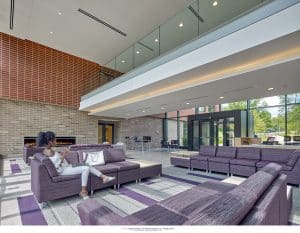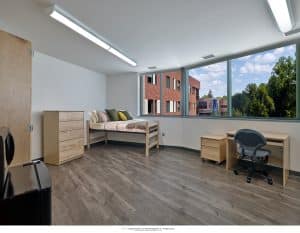As educational institutions evolve to meet the changing needs of their students, the approach to student housing construction must also adapt. Today’s students seek more than just a place to sleep; they need spaces where they feel safe, supported, and part of a community. Yet, universities face the practical challenge of constructing facilities that can withstand the rigors of student life without feeling cold and impersonal. Striking a balance between creating welcoming, engaging environments and ensuring the durability of these facilities is crucial.
Understanding Student Needs
The essence of student housing transcends basic accommodation. It plays a pivotal role in the college experience, offering a unique opportunity for personal growth, learning, and community building. For many students, college dormitories are their first “adult” home, a space just their own, where a sense of independence is formed. Therefore, the design and management of these spaces must prioritize safety, inclusivity, and a sense of belonging.
Safety is paramount, with students and parents alike placing a high premium on secure living environments. However, safety extends beyond physical security measures; it encompasses mental and emotional well-being. Housing facilities that support a strong sense of community can alleviate feelings of isolation and stress, contributing to a safer, more engaging college experience.
The Durability Dilemma
While welcoming and home-like is a must, student housing construction also needs to be incredibly resilient. The wear and tear on student accommodations are significant, with facilities often undergoing more stress than typical residential buildings. This necessitates construction methods, materials and designs that can endure the test of time without constant repairs or renovations, which can be disruptive and costly.
Sustainability is another critical factor. Institutions are increasingly recognizing the importance of green building practices, not only for their environmental benefits but also for their long-term cost efficiencies and appeal to eco-conscious students. Sustainable, durable materials that reduce the carbon footprint of a building, while also standing up to the demands of student use, are becoming the standard.
Striking the Balance
How, then, can institutions balance these seemingly divergent needs in their student housing construction? The key lies in innovative design, thoughtful planning, and quality construction. Colleges and Universities need their on-campus student housing facilities to last decades.
- Design for Community and Privacy: Incorporating communal spaces that encourage interaction and foster a sense of community, alongside private areas where students can retreat and recharge, is essential. Flexible design elements that can adapt to changing needs and uses are also beneficial.
- Incorporate Durable, Sustainable Materials: Choosing materials that are not only durable but also environmentally friendly can enhance the sustainability of student housing. Features such as energy-efficient lighting and water-saving fixtures contribute to a building’s long-term viability and students’ well-being.
- Emphasize Security with Technology: Modern security systems, including keyless entry and surveillance cameras, can enhance safety without making housing facilities feel like fortresses. Integrating technology in a way that respects privacy while ensuring security is a delicate but necessary balance.
- Engage Students and Facilities Management in the Process: Involving students as stakeholders in the planning and design of housing facilities can ensure that the end result meets their needs and expectations. Including facilities management representatives helps students understand the realities of maintaining a student housing facility. This partnership can lead to innovative solutions that administrators might not have considered.
- A perfect blend of durability and comfort, this common area invites students to study, socialize, and relax under the natural light from wide windows.
- Welcoming and resilient, our lounge area with durable couches is the heart of dorm life – the ideal spot for impromptu gatherings and restful breaks.
- Designed for comfort and practicality, our resident rooms offer a personal haven for students, balancing cozy aesthetics with the robustness needed for college life.
Looking Ahead
As the landscape of higher education continues to shift, so too will the demands on student housing and the nuances of student housing construction. The ongoing challenge for institutions is to create spaces that not only meet the immediate needs of their students but can also adapt to future changes. The goal is to build not just housing but homes where students can thrive academically, socially, and personally.
Creating a welcoming experience, where students feel safe and like they belong, balanced with the school’s need for durable housing facilities, is not just a construction goal—it’s a commitment to the future of education and the students it serves. By embracing this challenge, institutions can ensure that their student housing facilities are not only built to last but are also cherished spaces of growth and belonging for generations to come.







